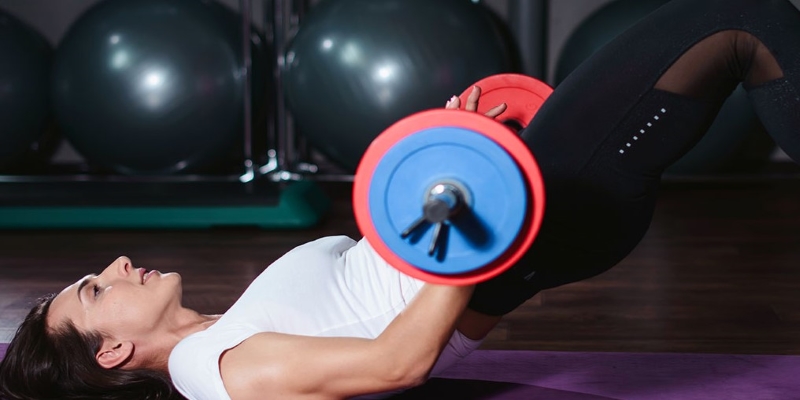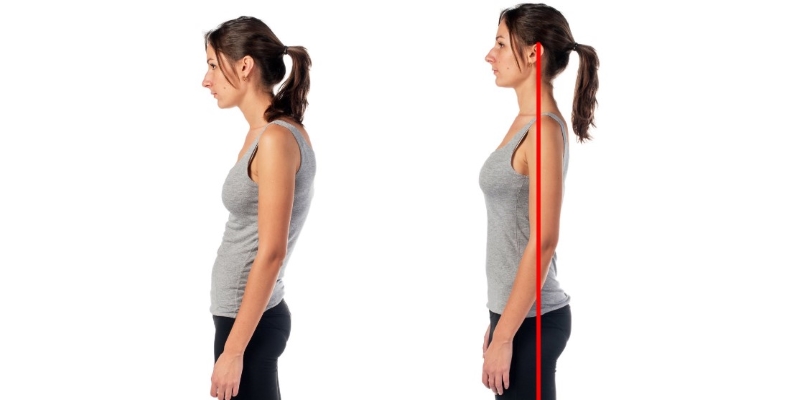When it comes to building a stronger, shapelier butt, the debate often comes down to hip thrusts versus squats. Both exercises have their merits, but recent insights suggest that hip thrusts might be the superior choice for targeting and developing your glutes. Let's explore why hip thrusts can offer more benefits for your butt than squats and how adding them to your workout routine can lead to noticeable results.
To understand why hip thrusts may be better for your glutes than squats, it's essential to first grasp how each exercise works. Squats are a compound movement that primarily targets the quadriceps, hamstrings, and glutes, with a secondary focus on the core and lower back. This exercise involves bending at the knees and hips while keeping the chest up and back straight, making it excellent for overall leg strength and endurance.
On the other hand, hip thrusts specifically target the glute muscles. This exercise involves sitting on the floor with your upper back against a bench, placing a barbell or weight across your hips, and then thrusting your hips upward while keeping your feet firmly planted on the ground. The primary movement is the hip extension, which engages the glutes more directly than squats.
When it comes to building a strong and shapely backside, the debate often centers around hip thrusts versus squats. Both exercises have their merits, but many fitness enthusiasts and experts agree that hip thrusts offer unique advantages that make them particularly effective for targeting the glutes. If you're aiming for optimal results in your butt workout, here are five compelling reasons why hip thrusts might be your best bet.
First and foremost, hip thrusts provide a more direct and intense focus on the glutes compared to squats. While squats do engage the buttocks, they also involve multiple muscle groups, including the quads, hamstrings, and lower back. This can dilute the intensity of the glute activation. In contrast, hip thrusts are designed specifically to target the glutes.

By placing the upper back on a bench and driving the hips upward with weight, you can more effectively isolate the glutes. This isolation allows for a greater range of motion and a stronger contraction in the glute muscles, leading to more noticeable improvements in size and strength.
Another advantage of hip thrusts is their ability to minimize lower back strain. Many people struggle with lower back discomfort during squats, particularly if their form is not perfect or if they are lifting heavy weights. Hip thrusts, however, place the body in a position where the lower back is less involved.
The movement primarily focuses on the glutes and hips, which can reduce the risk of lower back pain and allow individuals to push their limits without worrying about injury. This is especially beneficial for those with existing back issues or those who are new to strength training.
Due to the angle of the movement, hip thrusts also offer superior muscle activation. When performing a squat, the glutes are activated but not fully stretched or contracted throughout the exercise. Hip thrusts, on the other hand, allow for a greater range of motion.
The exercise requires you to extend your hips fully at the top of the movement, which results in a more intense contraction of the glutes. Studies have shown that this position maximizes muscle activation in the glutes compared to other lower-body exercises, including squats. This means that you can achieve better results in less time with hip thrusts.
Additionally, hip thrusts are versatile and can be adapted to different fitness levels and goals. You can start with bodyweight hip thrusts and gradually add resistance as you become stronger. This adaptability makes hip thrusts a great exercise for beginners and advanced lifters alike.
You can use various equipment, such as barbells, dumbbells, or resistance bands, to increase the challenge and keep your workouts interesting. This versatility ensures that you can continue to progress and build your glutes effectively over time.
Finally, incorporating hip thrusts into your routine can complement other exercises and enhance overall lower body strength. While squats are excellent for overall lower body development, they do not target the glutes as directly as hip thrusts do.
By adding hip thrusts to your workout regimen, you can achieve a more balanced development of the glutes and improve your performance in other exercises. For example, a stronger gluteus maximus can lead to better performance in squats, deadlifts, and athletic movements, as the glutes play a crucial role in stabilizing and powering these activities.
Hip thrusts are particularly effective for developing glute strength and power. The exercise mimics the movement patterns required in many athletic activities that rely heavily on powerful hip extensions, such as sprinting and jumping. By incorporating hip thrusts into your routine, you build the glute strength necessary for explosive movements. This increased strength and power translate to improved performance in sports and other physical activities that demand strong and agile glutes.
Strong glutes play a crucial role in maintaining proper posture and stability. Weak glutes can lead to poor posture and imbalance, which can contribute to back pain and other issues.

\Hip thrusts help strengthen the glutes, which supports better posture and core stability. A stronger posterior chain ensures that your hips, lower back, and core work together effectively, improving your body alignment throughout and reducing the risk of injuries.
Another benefit of hip thrusts is their ability to enhance hip mobility and flexibility. The exercise involves a full range of motion in the hip joint, which can help improve flexibility and reduce stiffness.
Regularly performing hip thrusts encourages the hip flexors to stretch and the hip extensors (glutes) to strengthen. This improved range of motion can be beneficial for overall functional movement and can complement other exercises and activities that require hip flexibility.
Hip thrusts excel over squats for glute development due to their direct focus on the glutes. They offer superior activation through a full range of motion and minimize lower back strain. They enhance hip mobility and are adaptable to different fitness levels.
Hip thrusts isolate the glutes, leading to more significant muscle growth and strength. Incorporating them into your routine not only improves glute strength and posture but also complements other exercises for a well-rounded lower-body workout.

By Susan Kelly/May 10, 2024

By Susan Kelly/Feb 10, 2024

By Rick Novak/Jul 17, 2024

By Juliana Daniel/May 28, 2024

By Susan Kelly/Apr 01, 2024

By Juliana Daniel/May 29, 2024

By Triston Martin/Mar 06, 2024

By Triston Martin/May 06, 2024

By Juliana Daniel/May 30, 2024

By Susan Kelly/Mar 05, 2024

By Susan Kelly/Feb 20, 2024

By Susan Kelly/Mar 10, 2024